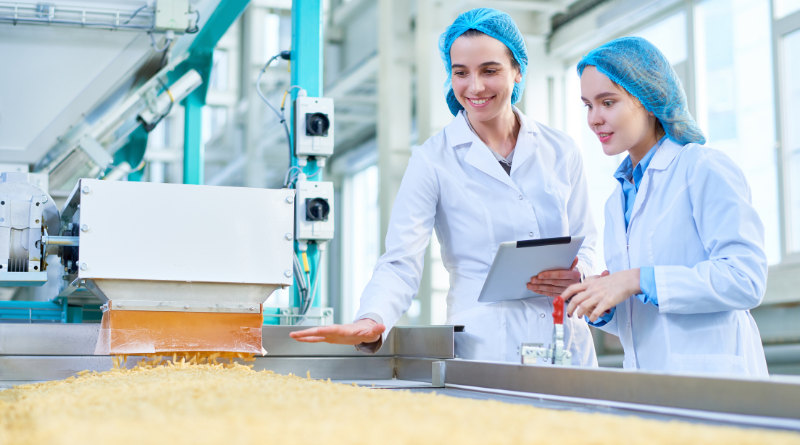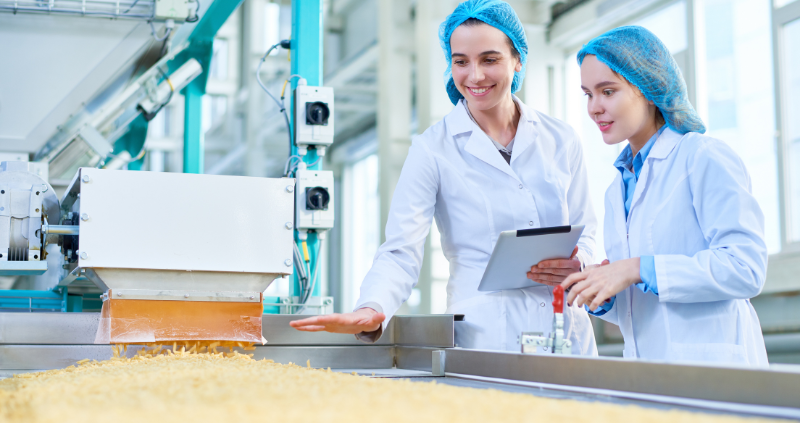How Biometrics Are Shaping the Food Industry

Biometrics has proven to be a strong asset for medical practitioners who desire to improve society’s health, one individual at a time. However, there’s also potential to utilize this technology within other sectors of society, such as the food industry. From food safety to security, it’s a partnership worth investing in.
The Shared Mission of the Medical and Food Industry
Medical professionals share the goal of assisting with people’s health and well-being. They often do this by setting regular appointments to check up on their bodies, make lifestyle and pharmaceutical recommendations, and provide care when they are sick or aging.
The food industry echoes similar sentiments. Many agriculturists and restaurants have inspiring visions of providing healthy and accessible meals, which can improve a person’s fitness. Food companies also have a corporate responsibility in upholding public health, understanding they have a big impact on people’s consumption and health.
Biometric Applications
Biometric technology is versatile in gathering data. Here are several biometric applications to showcase its power to reform the food industry.
Food Safety
Biometrics is known for improving security since it records unique characteristics for strong authentication. This feature limits access control in food processing facilities and ensures only qualified personnel handle the food.
Implementing biometric technology also helps with food quality. Poor food safety can lead to life-threatening outbreaks. By having better access control, it’s easier to trace who handled the food supply and narrow down the reason for degrading food quality and freshness.
Food companies would be able to check the vitals of food assembly workers and packagers. If someone’s vitals indicate poor health and hygiene, steps can be taken to avoid potential food contamination.
Food Marketing
Biometrics also help with the marketing of these food items. The industry may struggle to sell certain food products, but there’s information to provide them further insight into a consumer’s buying intention. For example, eye-tracking lets producers know people’s eye movements and assess what part of the food packaging stimulates them to buy.
Techniques like automatic facial expression analysis are also helpful. This biometric technology gauges a consumer’s emotions when they are surveying food aisles, paying close attention to the micromovements of the lips, eyes and cheeks.
Granted, food marketers must obtain people’s consent for this information. While these tools don’t involve invasive collection tools, they provide plenty of user data that people may feel uncomfortable sharing.
Food Cultivation
Biometrics are known for providing information about humans, but these technologies could also be utilized for livestock, which vastly improves food cultivation. For example, cattle tend to wander. Putting on a collar with GPS ensures they can still roam free while keeping track of their movement.
Certain biometrics also measure vital signs such as heart rate, blood pressure, temperature and more. Farmers and ranchers can gain much more insight into the health and well-being of their livestock in the long run, which can support quality end products.
The United States Department of Agriculture even goes as far as evaluating meat quality with a grading system. For example, wagyu meat comes from unique cattle breeding and specialized feeding techniques. Small changes to animal health and behavior can make a major difference to how the meat is processed is sold. Biometrics could help farmers and ranchers keep better tabs on their animals and boost meat grades.
Rapid Allergen Detection
Medical professionals may encourage using biometric technology for rapid allergen detection. Most people only realize they’re having a medical emergency upon seeing external symptoms, but there are also internal factors that indicate an allergy attack.
The sooner a health complication is detected, the quicker care is given. Food producers can partner with restaurants and food service establishments to improve their allergen management and offer testing when necessary.
Personalized Nutrition
Diet and exercise influence health and well-being. Biometric technology provides insights into people’s strengths and weaknesses for personalized training plans, covering one half of the equation. Luckily, wearable devices can track one’s dietary intake and requirements, which medical professionals could utilize for customized nutritional plans.
The medical industry could also connect with food producers and delivery services to curate meal options and ensure a healthy and well-balanced diet.
Improving the Food Industry With Technology
The food industry has already made many strides in production and distribution. However, adding biometrics technology can progress the food system even further. It also benefits medical practitioners as it improves the overall health and well-being of the world’s population.





Leave a Reply
Want to join the discussion?Feel free to contribute!